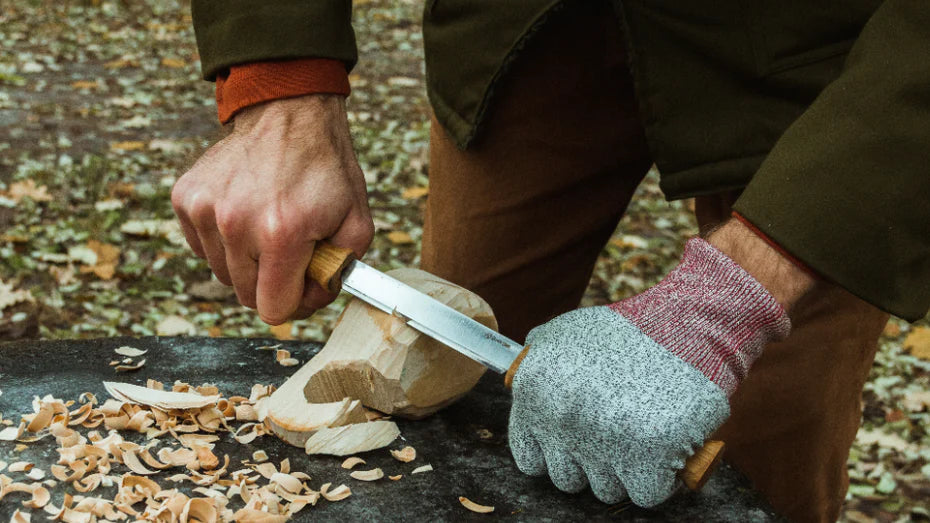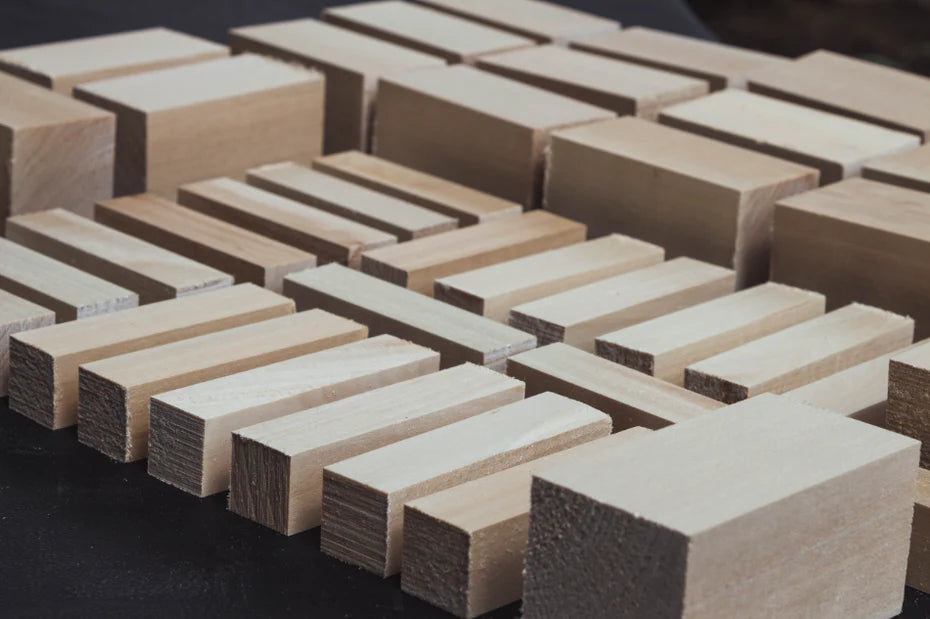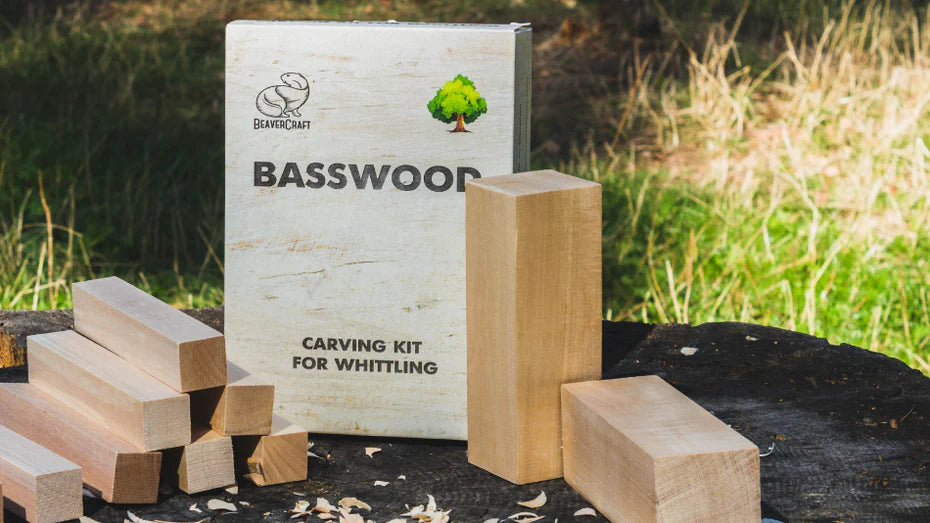What is the Hardest Wood for Carving?

For those getting into wood carving, you'll notice that there's more stuff to learn as you improve. You also start wondering about other wood-related things that can help you improve your carving. So, let's explore different wood types and find out which wood is the hardest for carving!
How Challenging is Wood Carving?

Wood carving encompasses a spectrum of challenges, from effortlessly simple to complex. The difficulty level is mainly determined by how intricate the design is and what kind of wood is used.
Basic hand tools will be suitable for beginner work in relief carving and other techniques. The designs are generally simple or two-dimensional. Making full-figure sculptures and other intermediate wood carvings requires more sophisticated tools and a higher artistic ability.
Complex woodcarving tasks are satisfying, although they can be hard and time-consuming. Complex intarsia designs or the creation of architectural details demand a great deal of patience and specialized carving instruments.
Whatever one's skill level, carving wood is a rewarding and demanding hobby. Beginners can get a smooth start on this artistic adventure with the wealth of free tutorials available.
Janka Wood Hardness Ratings
The hardness of wood is evaluated using the Janka hardwood ratings test, which is mostly used to determine the hardness of flooring planks. Wood's density and hardness are often correlated. Nonetheless, woodcarvers compare various kinds of carving wood using the Janka hardwood ratings. For example, a cursory glance at the rating chart indicates that Basswood is toward the bottom, ranking among the softest hardwoods.
On the other hand, Black Walnut is harder to carve than Basswood because it is ranked higher. The following section may include a description of the Janka rating test and a chart showcasing some of the more well-known hardwood species found in North America.
With a hardness five times higher than aspen, one of the softer hardwoods, hickory, is the hardest hardwood that can be found domestically. While the examples above only encompass a handful of the most popular hardwood species, the North American hardwood population has hundreds of types.
| Species | Pressure to Mar |
|---|---|
| Ipe | 3684 |
| Ebony | 3220 |
| Mesquite | 2345 |
| Bubinga | 1980 |
| Hickory | 1820 |
| Rosewood | 1780 |
| Wenge | 1630 |
| Bamboo | 1380 |
| White Oak | 1360 |
| Ash | 1320 |
| Red Oak | 1290 |
| Teak | 1155 |
| English Oak | 1120 |
| Black Walnut | 1010 |
| Cherry | 995 |
| Yellow Pine | 870 |
| Douglas Fir | 660 |
| Poplar | 540 |
| Basswood | 410 |
| Eastern White Pine | 380 |
Top Hardest Woods for Carving

The selection of wood is crucial when it comes to woodworking projects that aim for accuracy and longevity. Here is a list of some of the hardest woods hand-picked for carving purposes. Discover the remarkable qualities of these special woods that set them apart from other carving materials, regardless of your level of experience with woodworking.
Walnut Wood

Thanks to its unique grain pattern and deep color, walnut is becoming more and more popular in a variety of items. This wood is especially suitable for carving projects because of its inherent strength, stability, and remarkable shock resistance.
Because of its straight grain, walnut wood frequently doesn't require extra filling; therefore, staining might not be necessary unless color uniformity is an issue. The following advice should be considered when selecting walnuts for carving: deep cuts should be handled carefully to avoid wood springing out.
Also, depending on where it grows, walnut grain can vary from being quite open to being practically closed, which affects how it carves. Closed-grain walnuts are more challenging to carve, whereas open-grain walnuts are easier.
Black walnuts—distinguished by their massive trunk and towering stature—contribute to a steady, straight grain that makes carving easier. This wood is easy to work with with hand tools, as it preserves the fine features of many types of cutting instruments. Still curious if walnut is good for carving?
Oak Wood
With a variety of qualities that make it almost perfect for carving, oak is one of the most popular woods for this activity. Oak wood is known for its extreme durability; it has a Janka hardness value of 1360 lbs, higher than red oak, rated at 1,290 Janka.
The wood is a favorite among carvers who value hardwood subtleties for intricate work because of its well-defined, straight grain and uneven texture. The water resistance of white oak is one of its distinguishing characteristics, which is explained by the tyloses closed in its pores. Red oak, on the other hand, does not show the same cellular development, leading to open pores.
Compared to red oak, white oak has longer rays that run alongside the grain. Its color range, which goes from light beige to brown, is remarkable. Different colors can be displayed by the same oak tree, making it difficult to distinguish between oak types based alone on color. This finish works well on white oak, giving a room various looks, from a deep walnut-like finish to a lightened space with vivid colors.
Beyond being beautiful, this wood is prized for being workable and durable. Because of its hardness, the wood is best carved with chisels and gouges and other tools with a sturdy design, although wood carving knives are also a good choice.
Cherry Wood
Cherry wood, highly prized for its attractiveness in woodworking, is a superb option for those who enjoy wood carving. Its impressive 995 lbf Janka hardness grade, which attests to its stiffness, shows that this wood strikes a balance between durability and carvability.
Cherry wood has a delicate grace to its grain, with a pattern that flows gently and is ideal for intricate carving. Although there are pores in the wood, they are not very noticeable, which makes for a surface that carves smoothly and is perfect for fine detail work.
Cherry wood's ability to change color over time is one of its unique characteristics. The wood gradually darkens when exposed to light and develops into a glossy patina, improving its aesthetic appeal. The wood's natural warm tones range from soft pinks to deep reddish-browns, making it very popular for carving intricate designs.
The cooperative character of cherry wood makes it ideal for carving, enabling a wide range of tools to be used for intricate work. Cherry wood has a moderate hardness that allows for efficient carving and shaping with most hand tools and wood carving knives.
Hickory Wood
Hickory is one of the hardest woods that can be carved, with a remarkable Janka hardness value of 1820 lbf. This makes it a great choice for applications that require endurance without losing detail.
Hickory wood's unique beauty is demonstrated by its grain, which has a prominent, dynamic pattern that gives carved objects a hint of organic grace. Because of the wood's strength and straight, fine grain, precise details may be achieved, giving carvers the freedom to experiment with both delicate and bold designs.
The inherent stability and shock resistance of Hickory shines through, providing a carving experience that is dependable and robust. Although this wood is difficult to carve by hand because of its hardness, the long-lasting beauty of the finished projects explains the extra work involved in using chisels, gouges, or carving knives.
In addition, Hickory's earthy, warm tones work nicely with a range of finishes. Hickory wood allows carvers to explore a range of options, from darker stains that convey a sense of rustic appeal to natural varnishes that highlight its grain, giving their carved pieces a touch of timeless attractiveness.
Basswood

For woodcarvers, Basswood is a hidden treasure that provides a unique and fulfilling experience. Basswood is a great option for individuals looking for a wood that reacts elegantly to exquisite design because of its delicate yet plastic character and Janka hardness rating of 410lbf, which tends toward the softer side.
Basswood, which is prized for fair and uniform texture, has a grain that is like a blank canvas waiting for the sculptor's creativity. Its smooth carving is made possible by its fine, straight-grain pattern, which makes it very useful for applications requiring intricate details.
Because Basswood is lightweight, it is more appealing and has less structural strength than harder woods, making carving sessions smooth and enjoyable. This feature and its low resistance to carving tools allow carvers to develop their creativity without being restricted by material that is too stiff.
Basswood's remarkable ability to adjust to different finishes is one of its most notable qualities. Basswood easily takes stains and paints, ranging from muted to vivid colors, so carvers can easily add their distinctive touches to their masterpieces. Basswood is a great option for artists who want to incorporate a variety of visual expressions into their carved creations because of its adaptability. Still curious, is Basswood good for carving?
Are Hardwoods Good for Carving?

Wood is a substance that humans have been using for a very long time. As we progress, we learn more about every aspect of our work, and using BeaverCraft hardwood products properly is no exception. Although each wood type is unique, it falls into two categories: hardwood and softwood. What are the benefits and drawbacks of using hardwood for carving?
Advantages of Hardwood
- Greater Density: Hardwood's higher density makes carved objects more stable, strong, and durable by enabling detailed detailing.
- Increased Fire Resistance: Due to its density and low resin content, hardwood has exceptional fire resistance, adding an extra degree of security.
- Durable Material: Hardwood, which is renowned for its durability, is used to carve artwork and useful objects that endure and become treasured keepsakes.
- Easy Maintenance: Maintaining hardwood involves little effort. Hardwood carvings maintain their aesthetic appeal and structural integrity with regular upkeep and treatments like polishing or waxing.
- Variety of Appearance: Woodcarvers can select the ideal material for aesthetically striking and one-of-a-kind creations from a vast array of hardwood's appearances, colors, and grain patterns.
These pros make hardwood the preferred choice for woodcarvers valuing durability, beauty, and versatility in their creations.
Drawbacks of Hardwood
- Higher Cost: Compared to softwood, hardwood is typically more expensive, which presents a type of financial issue for woodcarvers, especially those on a tight budget.
- Slow Growth Rate: Hardwood trees often grow more slowly, which makes them harder to find and may raise the price of raw materials.
- Concerns about Overexploitation: The overexploitation of certain hardwood species leads to deforestation and population decline. Supporting sustainable practices requires responsible sourcing.
- Challenges with Workability: Although hardwood's density contributes to its durability, it can also make it harder to work with. Carving it requires more skill, effort, and sharper tools.
- Expensive Refinishing: Over time, hardwood may need to be refinished, which can increase the cost overall and involve sanding, staining, and putting finishes.
Despite these drawbacks, hardwood remains a popular choice for woodcarving due to its unique qualities, durability, and aesthetic appeal. Woodcarvers often find that the benefits outweigh the drawbacks when working with hardwood.


2 Comments
Glad you liked the post! Red oak will make a sturdy mallet, though—perfect for chisel work! We’re happy the hardness ratings were helpful too. If you need any tips on your mallets or wood choices, feel free to ask!
Nice post Roman, thanks. I have a piece of red oak and am carving two mallets for chisel work. The conundrum is I needed a mallet to chisel these mallets. lol. I enjoyed the wood species hardness ratings too. Thank you.